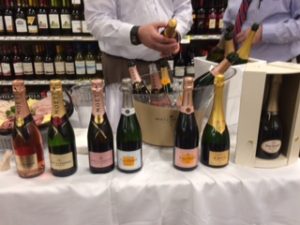Some phenomanal wines and excellent food for the Spanish extravaganza! Probably one of the longest/latest tastings, which seems appropriate to the Spanish theme.


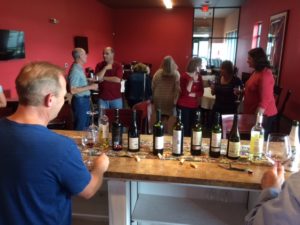

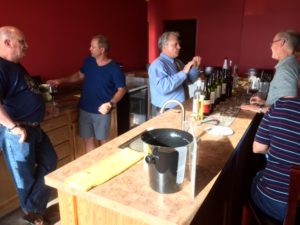
Some phenomanal wines and excellent food for the Spanish extravaganza! Probably one of the longest/latest tastings, which seems appropriate to the Spanish theme.





By BY BRYAN CRISWELL C.S.
The wine producing regions of Europe are home to some of the most lavish and sought after wines in the world. Yet some of Spain’s more obscure corners can offer some of the same great wine experience’s at a fraction of the price.
When connoisseurs talk about old world wines, they are invariably referencing famous places like Bordeaux, Burgundy, Piedmont, & Tuscany or Mosel-Saar and the Rhine. And yet Archeology reveals that grape vines have been grown in Spain since 3000 B.C., and it is believed that Phoenician traders from the eastern Mediterranean began cultivating and making wine here around 1000 BC. Today, Spain is covered by more wine vines than any other country on Earth, and will produce more wine than any country in the world other than France and Italy.
In 1978 Spain adopted a new constitution, one that restored the regions of old and the ancient kingdoms of 1492. Listed here are the regions acknowledged as the 7-major wine growing provinces: Galicia, Castile y Leon, Ebro, Catalonia, Levent- Murcia, Meseta, Andalucia and 17 administrative regions known as communidades autónomas.
Meseta has the largest concentration of vineyards cultivating most prominently the Airen grape variety, although the finest and most recognized wines come from Galicia (Rias Baixas), Catalonia (Cava & Priorat), Andalucia (Sherry), Castilla y Leon (Rueda & Ribera del Duero) and probably the most accepted dry wine from the upper Ebro (Rioja).
Real value can be had in your wine purchase because you will not be paying for the inflated price of known and sought after wine regions. The world demand for wines produced from these regions are justified due to their unique growing conditions that create classic wines. Reputable regions have only a limited amount of wine to sell as only so much can be produced thereby raising the price of your purchase.
Spain has its own unique growing conditions as climate, geology and topography vary around the countryside, as will the wine styles. Location of the vineyards will strongly influence the style of wine. Galicia often referenced as the “Green Spain”, is a cool wet region that is plush and green with ample vegetation. The region is noted for producing light crisp white wines, while vineyards in the upper Ebro are warmer and set in a drier location. By being further inland the Ebro region is influenced by climatic conditions that are termed “Continental” & protected from storms and winds by the snow covered Pyrenees Mountains. The wines lend themselves to be more mid-bodied and fruit-driven, wines like Rioja, and Ribera del Duero. The Meseta Province is a parched central plateau made up of chalky bedrock, and to the southwestern region you have the sandy and sunny climate of Andalucia home to Sherry.
Sherry can be influenced by weather like any region but wine making techniques implemented by wine makers will have the most direct influence on the wines style and flavor profile from the region. Catalonia and Levent-Murcia are close to the Mediterranean so the climatic conditions are maritime thereby producing heavier, more powerful reds like the wines from Jumila, except in higher-altitude districts, where reduced heat and humidity allow the production of lighter reds and notably sparkling white Cava.
Spain no doubt has a varied typography, with each macroclimate delivering its own unique condition to its region and each specific mesoclimate of which has its own influence on each and every individual vineyard and each microclimate that directly gives each vine its own distinctive profile. These factors allow for each bottle of wine to separate itself from all other bottles within the country and the world.
You may find more “Bang for the Buck” by purchasing Spanish wine because you will not be paying the higher price of “International varieties” varieties such as Cab & Chard. International variety’s come with a higher price tag due to popularity and the cost of developing and planting new vineyards. There is also the cost of tying up dollars in the amount of time needed to mature vines before they can harvest grapes.
What you will experience, are unique wines that have been cultivated for centuries, developing their own unique and interesting flavor profiles. The fact that these vineyards are only managed and not newly planted, equates to lower cost with incredible taste. The Spanish wine industry has only recently begun to show any interest in varietal-led winemaking and marketing. Several hundred varieties are grown & used in Spanish wine production, but the vast majority of wine is made from an insignificant sum of these varietals.
The major red varieties are Tempranillo, Garnacha and Monastrell also known in France as Mourvedre. Major white wines are Airen, Macabeo, Palomino and Albarino. Accounting for both quality and quantity of juice turned into wine is the famous Tempranillo grape from Rioja & Toro. Where the Tinto Fino is the most prominent grape of Ribera del Duero. Garnacha is valued for its jammy fruit character and its ability to produce wines high in alcohol. It is put to good use in the deeply-colored rosés of Navarra, but perhaps shows best when blended with the more-structured, intense flavored Monastrell.
The most widely planted variety in all of Spain to much surprise is the little-known Airen grape. This is a high-yielding white variety that is drought resistance making it popular among growers. Many will never see this varietal because it’s typically used as a blending grape or used in the making of local brandy. Macabeo or Viura as it is known in Rioja is a main variety in both still wines and sparkling Cava. Palomino is sometimes seen as a stand-alone table wine but is more commonly and almost exclusively used in the production of Sherry. Albarino is predominately found in the north-west, and owes its admiration to the success of its most noted wine style, Rias Baixas.
‘International’ varieties such as Cabernet Sauvignon, Syrah, Chardonnay and Sauvignon Blanc are becoming more widespread in Spain, and their plantings are increasing in many regions. There are also regional specialties, but many of them are not found or are hard to find in the states due to a lack of focus in Spanish wines.
Over the past 20 years, Spain’s wine industry has recognized the need for improved if not state-of-the-art technologies. The result has been a momentous increase in quality and reliability year after year. Producers are adapting to the demands of the international wine market, giving way to innovation and offering both quality and value for the money. This modernization in vineyard and winery has directed a much improved national wine-classification system as well.
Bottles often will be labeled by the amount or lack of aging time that the wine has undergone before it is released to the public for sale. When a label designates the term vino joven or sin crianza, this literally translates as:” Young Wine”. These wines have seen very little or no time at all inside wood barrels or tank ageing. Many of these wines are meant for current consumption often within a year of their release. Some benefit from spending time in the bottle, developing what is known as “Bottle Character”. Vendimia or Cosecha may be seen on a label, this is literally the “Harvest or Vintage”, a minimum of 85% of the grapes must have been harvested within the year stated on the label. The most common aging designations on Spanish wine labels are Crianza, Reserva and Gran Reserva and are explained as below.
| Spanish Red Wine | Minimum Barrel /Tank Age | Minimum Bottle Age | Total Years Aged before release |
| Joven | 0 – 6 months | 0 | 0 |
| Crianza | 6 months – 1 Year | 1 Year | 2 Years |
| Reserva | 1 Year | 2 Years | 3 Years |
| Grand Reserva | 18 months – 2 Years | 3 Years | 5 Years |
| Spanish White / Rose Wine | Minimum Barrel /Tank Age | Minimum Bottle Age | Total Years Aged before release |
| Joven | 0 – 6 months | 0 | 0 |
| Crianza | 6 months – 1 Year | 6 months | 1 Years |
| Reserva | 6 months | 1.5 Years | 2 Years |
| Grand Reserva | 6 months | 3.5 Years | 4 Years |
I recommend that you go to your neighborhood 21st Amendment and pick up a bottle from each of these fantastic regions to try with your friends. In the quest to satisfy your thirst for wine knowledge you might discover the distinctive styles and variation among the 7 major wine growing provinces of Spain. Introduce your friends to a new wine worthy of time & conversation.
Steak, empanadas and great wines! Our resident chemists deal with a TCA issue to amazing results.
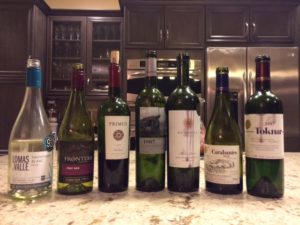



Often overlooked, is the fact that grape vines have been planted in South America since the 16th century, long before countries like Australia, New Zealand & South Africa made their first bottle of wine. As global wine companies search for new places to produce high quality wines & where acreage & labor is inexpensive, a renewed interest in South America has emerged. South America & its new world partners have judiciously applied science to the long traditional methods of their forefathers. It has only been in recent years that winemakers have not only tried to understand & match the European concept of “Terroir” but has incorporated science & technology alongside it.
Agricultural irrigation here originated in the 1500’s with Spanish settlers, although much of this system developed from the adopted methods of their predecessors, the ancient Inca. Trenches were dug in the Andes Mountains so that snowmelt could be used as run-off into man made reservoirs. This past & present method of collecting & using water to inundate agricultural fields is known as “Flood Irrigation” to which much needed moisture is used to cultivate vines, which in natural conditions, would rarely see water. With the addition of Argentina’s superior vineyards & modern production facilities, those wine makers who have focused on quality, rather than producing the mass-produced jug wines of the past, have given consumers an incredible value with some amazing wines.
As a wine producing country, Argentina is the 5th largest in the world & 8th largest in consumption. Although, the county has always been one of the world’s largest consumers of wine, over the past few decades recent generations seem to be less interested in wine & more interested in beer. We’ll have to wait and see how that trend affects Argentinean wine.
It is widely accepted that grape growing in Chile was started during the 1550’s, when the Spanish settled in the Central Valley. Wines produced at that point were used more for sacramental purposes than general consumption, but the long history of winemaking in & around Santiago remains. To a great extent, Chile’s wine production was once much like that of Argentina, where the focus was once on quantity over quality. Wines were even sweetened with boiled grape concentrate leaving wines with an inferior “maderized” character. But that all changed around 1830, when a Frenchman by the name of Claudio Gay convinced Chilean officials to set up an exotic botanical nursery containing pre-Phylloxera vines from France.
Phylloxera is an aphid that eats at the roots of vines, especially wine vines. They once wiped out European vineyards to such an extent that all European vines are now grafted onto American “resistant” rootstock. Yes, it’s true—America saved the European wine world! But what is unique to Chile is that most Chilean wines you buy today are from the original unadulterated French vines that the French themselves don’t even possess. These ancient cuttings are safely & naturally protected in an agricultural isolated area (protected by the Pacific Ocean & the Andes Mountain Range) free from Phylloxera and common vine diseases like powdery mildew. And that’s how you can drink a bit of history with Chilean wines, and the best thing about it—is that you can do it at a reasonable price!
Stop in to 21st Amendment at 3404 E.146th St. Carmel, In 46033. Meet Wine Director Bryan Criswell a Sommelier from the Court of Master Sommeliers and Wine Master from the Wine Education Guild. Bryan will freely consult with you Tuesday through Saturday & assist with any purchase, questions or suggestions that you may have.
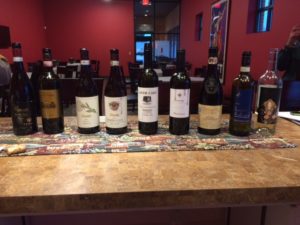
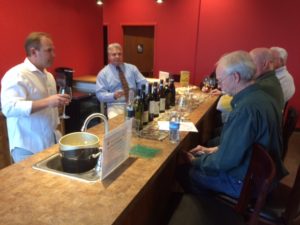

Okay, I may be a bit biased because these are my favorite wines, but I think this was the best tasting yet! Man, that last Cote Roti and the St. Joseph rocked! Some of the best wines I’ve had in a long time. There wasn’t a bad wine in the bunch.
Thank you to everyone who showed up and brought some killer wines. And thanks to 21st Amendment for hooking us up!!
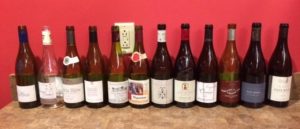


Like the rest of us, most wine drinkers are looking to purchase quality wines at reasonable prices and many will find themselves gravitating toward mainstream wine. Too many shoppers don’t realize that they are shortchanging themselves by overlooking high pedigree wines within the same price point that are not always noticed or rated by critics. But some of the best Old World wines are the often disregarded gems that come out of the Rhone Valley of France. Many of these wines can deliver the elegance of Burgundy and the power and longevity of Bordeaux at a much lower cost.
Northern Rhone
The Rhone region is divided into two separate demarcated districts, North and South, and of the two, Northern Rhone is considered by many as the most prestigious. This is where you will find names like Cote Rotie, Hermitage and the renowned Condrieu. Wineries from the north not only share the same grapes, the noble red Syrah and classic whites such as Viognier, Roussanne and Marsanne, but they share the difficulty of working the steep terrain within their vineyards. Some slopes are so treacherous that vines would not grow if not for the manmade terraces allowing both workers and vines to thrive. During harvest, the terrain is still so difficult that winches and pullies are required to get baskets of grapes from vineyard to winery.
Condrieu and Chateau Grillet make white wine exclusively from the Viognier grape. The vines of Grillet are planted on terraces so small that some can only contain around 10 vines per terrace, making this the smallest AOC in France. Wine from Cote Rotie and Cornas cover less than 500 acres, limiting production and fostering red wines with exceptional structure that are suitable for long term aging. Hermitage, Crozes Hermitage and St-Joseph are unique tasting wines that can have savory notes including bacon fat and subtle smells of barnyard. On their own, these wines may not sound appealing, but imagine pairing them with bacon wrapped beef wellington or a wrapped fillet Mignon. Or how about a roasted garlic stuffed lamb!?
Southern Rhone
In the southern Rhone you will find Cotes-du-Rhone, Cotes-du-Rhone-Villages and the famous Chateauneuf-du-Pape. The topography of southern Rhone is much flatter than its northern counterpart and the climate is Mediterranean rather than Continental, which makes the diurnal temperatures more consistent.
On the eastern bank of the Rhone River is the famous Chateauneuf-du-Pape. The name translates to the “New Castle of the Pope.” Many don’t realize that not all Popes lived in Rome. In fact, from 1303-1378 there were 7 Popes that resided in Avignon, France and were known as the Avignon Papacy or the Babylon Captivity. The Babylonian captivity or Babylonian exile is the reference to the period in Jewish history where a number of Jews of the ancient Kingdom of Judah were captives in Babylonia after the Battle of Carchemish in 605 BCE.
As of 2009, 18 different grape varieties are now permitted in the making of Chateauneuf-du-Pape. It is not required to use all 18 varieties and few actually do. The majority of these wines, roughly 70%, use Grenache as the base blend. Chateau Beaucastel, however, has always chosen to include all approved variety’s in their wines. On rare occasions, you might find a bottle of white Chateauneuf-du-Pape. These are difficult to find because they represent less than 5% of the grapes harvested. Still, with white varieties approved to be grown, that means your red Chateauneuf-du-Pape could actually have small portions of white grapes blended in! Within the southern Rhone you will find a great number of quality wines from districts such as Vacqueyras, Gigondas, and Raster. Two equally important appellations are Lirac and Tavel, which are known for their classic Rosés.
So next time you’re out to purchase a bottle of wine, don’t go for the ordinary, go for the extraordinary, in a word, RHONE!
Selected below is a small sample of the vast selection of wines to be found at your nearest 21st amendment store. I think you will find these to be prime crowd pleasers well suited for most any drinking and dining experience. –Bryan Criswell
2014 Pont Du Rhone Red Blend, Cotes du Rhone, Rhone France ——————————————- $10.98
2015 Grange Des Dames Rose Blend, Ventoux, Rhone France ———————————————– $14.98
2012 Domaine Du Vieux Chene Red Blend, Cote-du-Rhone-Village, Rhone France ——————– $23.98
2006 Les Perrines Syrah Saint-Joseph, Rhone France ———————————————————- $24.98
2005 Domaine Jaboulet Rose Blend, Crozes Hermitage, Rhone France ———————————– $25.97
2007 Le Mas des Collines Rose Blend, Gigondas, Rhone France ——————————————– $29.99
Stop in to 21st Amendment at 3404 E.146th St. Carmel, In 46033. Meet Wine Director Bryan Criswell a Sommelier from the Court of Master Sommeliers and Wine Master from the Wine Education Guild. Bryan will freely consult with you Tuesday through Saturday & assist with any purchase, questions or suggestions that you may have.
A great lineup of wine & lots of hearty food…can’t go wrong!
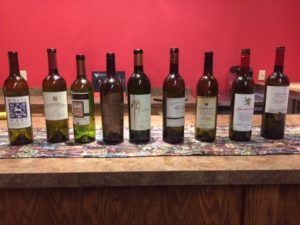





We tried 6 excellent Pinot Noirs at a variety of styles and price points from: CA, Oregon, New Zealand, and Burgundy
Thanks 21st Amendment for the great times!


What a deal! Great champagnes and sparklers, lots of food, and a fun crowd. If something like this comes up again, you shouldn’t miss it
!

